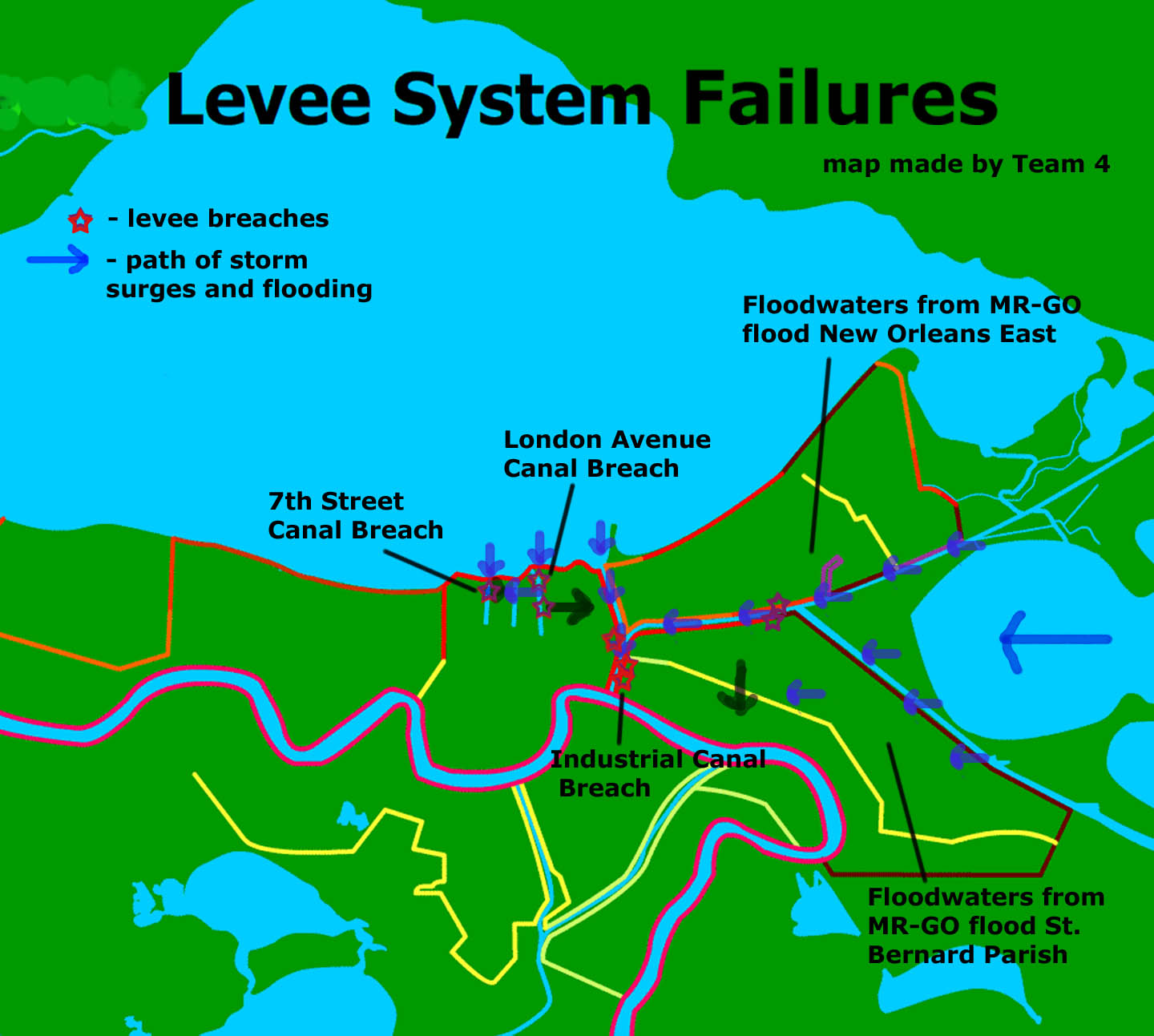Written
by Katie Pesce
Researched by Team 4
17th Street Canal
and London
Avenue Canal
Breaches
At one
point along the 17th
Street Canal and
at two points along the London
Avenue Canal,
the levees were not overtopped but failed. The levees in this
area are
about 14 feet, but the water inside the canals was only at 8.5 feet.
The canals
were backed up with water from the storm surge coming from Lake Pontchartrain. The pumps in the canals were
unable to pump the
water out because the pumps were located below sea level in the section
of the
canal in the interior of the city, not near the lake. The levees along
both
canals are concrete I-walls atop earthen levees. The concrete walls
were actually
pushed aside by the water pressure building up inside the canals. The
steel
pilings driven into the soil were too shallow, and the soil foundations
in
which the concrete walls were anchored in were poor, too soft, and
permeable.
Water was able to seep through and undermine the foundations and wedge
the wall
from its foundations, causing the whole wall to be pushed over and
water to
enter the city. The canals, which are supposed to pump water out of the
city,
actually caused much of New
Orleans
to flood by letting water into the city. The breaches at the 17th St.
Canal and London
Avenue Canal were caused by
engineering failures. The levees were built on top of poor soil and
sand, the
pilings were not deep enough, and the pumping system was designed
poorly.
(IPET)
Funnel
Effect, Industrial
Canal
Breach, and Flooding in the Lower Ninth Ward, St. Bernard Parish, and New Orleans
East
A storm
surge many feet higher than predicted for a
Category 3 storm preceded Hurricane Katrina into New Orleans. It came down the
Mississippi
River Gulf Outlet (MR-GO). It then entered the Intracoastal
Waterway
. While in the MR-GO and the Intracoastal
Waterway, the storm surge overtopped the earthen levees
along St.
Bernard Parish to the south and New Orleans East to the north. The
overtopping
of the levees caused erosion on the backside of the earthen levees as
water
came spilling over, weakening the system even more. The
Intracoastal
funneled the storm surge into the Industrial
Canal where it met up
with storm surge
coming in from Lake Pontchartrain.
The levees
with concrete floodwalls on the Industrial Canal
were breached once
on the west side into Bywater and twice on the east side into the Ninth
Ward,
where some of the worst flooding occurred. All of the levees in this
area were
overtopped. The water was 1.7 feet above the 13-foot levee. The
overtopping
eroded the levee on the protected side, letting more water pour in.
However,
some evidence shows that the initial flooding of the Ninth Ward
occurred before
the levees were overtopped. The levee was built on top of marsh which
was on
top of clay which in turn was on top of sand. A gap, or wedge, formed
on the
canal side of the levee between the wall and the marsh foundation,
increased
the water pressure on the wall, and caused it to fall over and flood
the Ninth
Ward. (IPET)
Many of
the levee breaches occurred where two different
types of levees were joined together. At these joints of two different
kinds
of materials
the weaker one would fail. This is why standardization of levees will
be key in
the solution. In the past, different groups built on top of each
other’s work at
different
times causing discontinuities in the system. (IPET)














